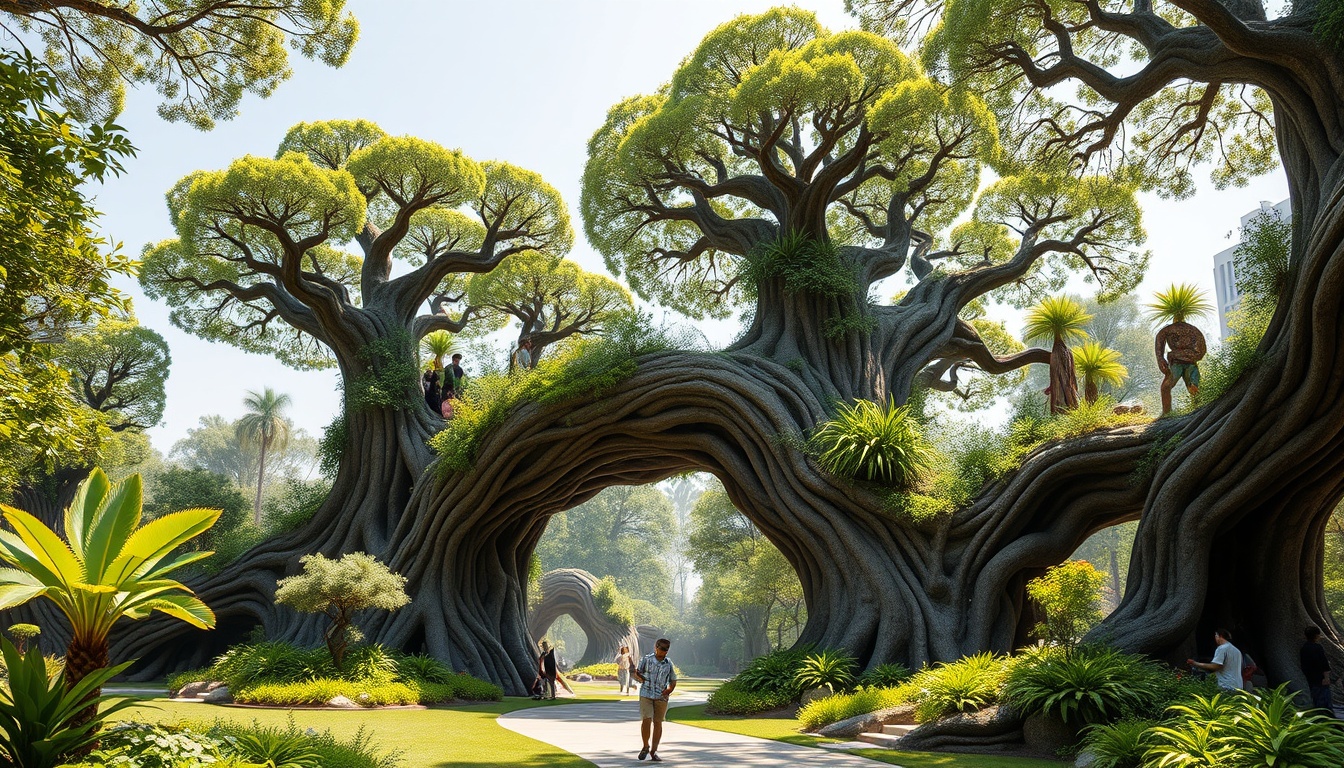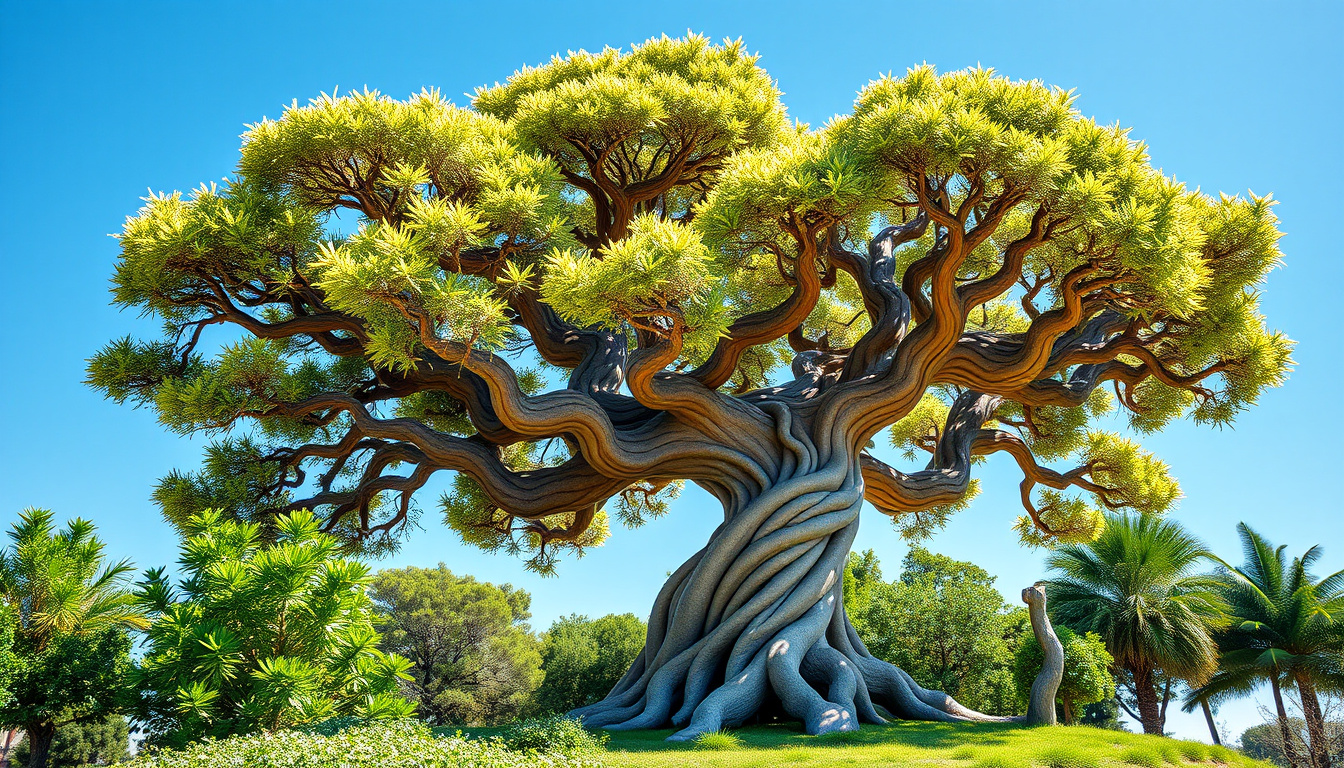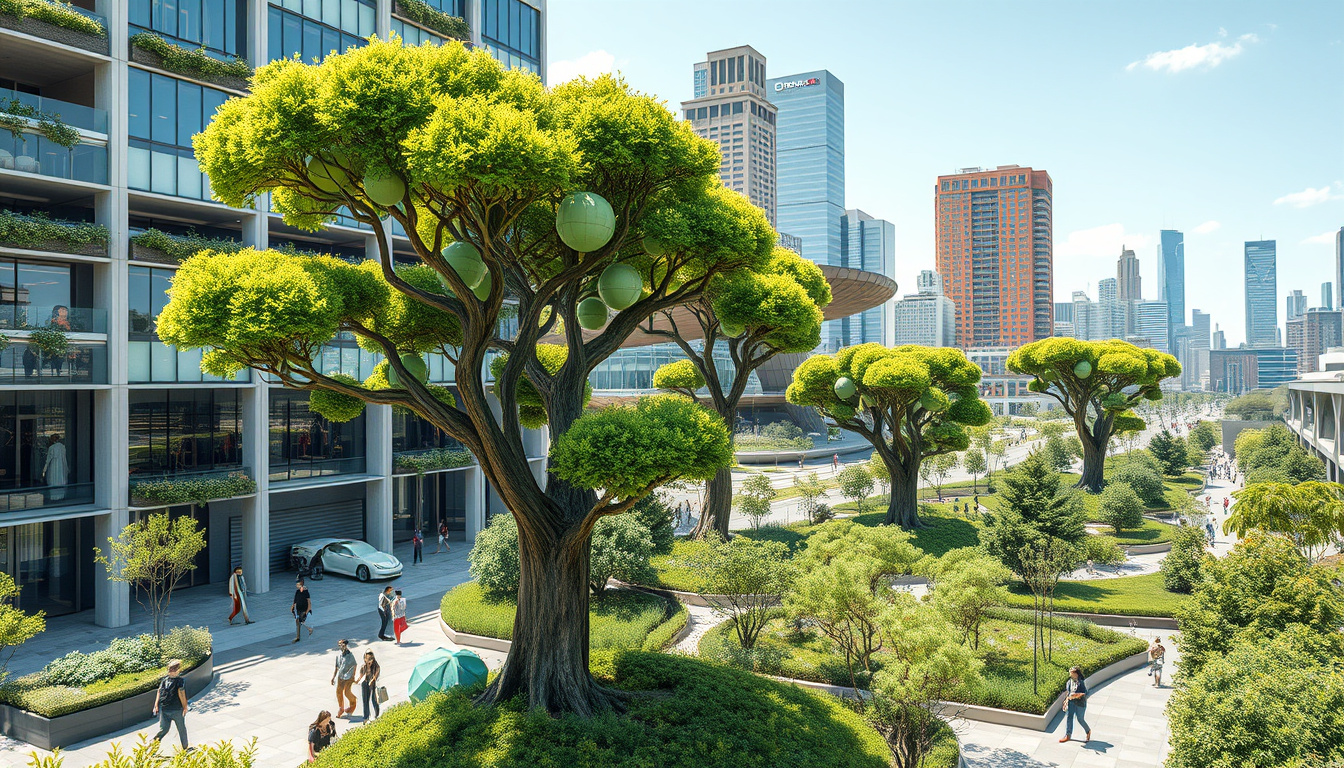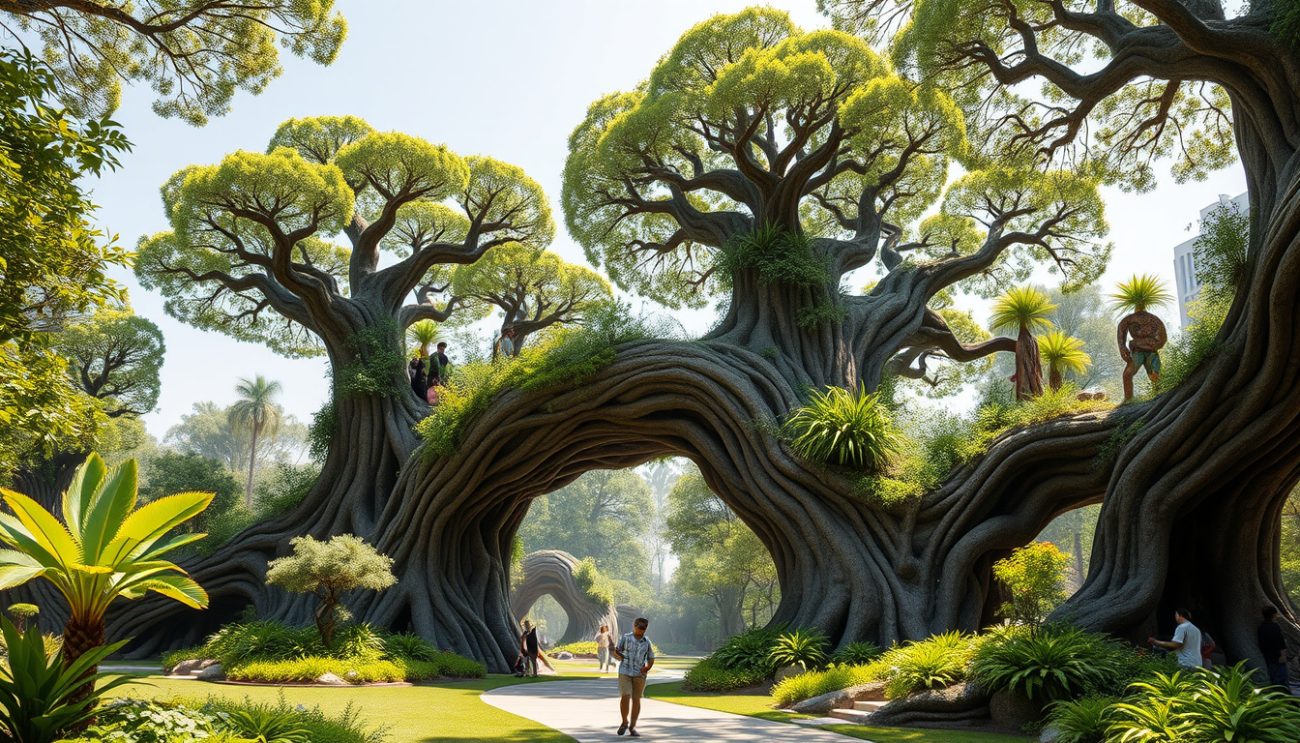As urban landscapes continue to evolve, one innovative trend is making waves in architecture and design: Tree Shapers. The secret art of living architecture reimagines how we interact with our environment by cultivating trees into practical structures. From whimsical installations to functional spaces, tree shaping combines artistry and engineering in a way that breathes life into our urban jungles. In this article, we will delve into the intricacies of living architecture, trace the fascinating history of tree shaping, explore the techniques employed, unravel the environmental benefits, and envision the future of this sustainable design in urban settings.

Key Takeaways
- Tree shaping is an innovative technique that transforms trees into living architectural structures.
- The practice has a rich history and has evolved significantly over time to adapt to modern needs.
- Various techniques, such as grafting and pruning, are essential for successful tree shaping endeavors.
- Living architecture, like tree shaping, offers numerous environmental benefits, including improved air quality and urban biodiversity.
- The future of tree shaping holds exciting prospects for sustainable urban design and green living spaces.
Understanding Living Architecture
In recent years, the concept of living architecture has gained significant attention, particularly through the innovative work of tree shapers. These skilled artisans and designers blend traditional techniques with modern sustainability practices to create structures that grow and evolve over time. Tree shapers harness the natural form and growth patterns of trees to craft incredible designs that are not just visually stunning but also environmentally friendly. This ancient practice of manipulating the natural world offers a unique approach to building that challenges conventional notions of architecture. By engaging with living materials, tree shapers forge a connection between nature and human creations, ushering in a new era of eco-conscious living spaces. Understanding living architecture through the lens of tree shapers reveals the potential of merging artistry with sustainability, ultimately fostering a deeper appreciation for the environment.
The History and Evolution of Tree Shaping
Tree shaping, also known as ‘tree shaping,’ is a fascinating art form that has evolved over centuries, captivating those who appreciate the intricate relationship between nature and design. The practice of versatile tree shaping dates back to ancient civilizations, where cultures recognized the potential to mold living trees into artistic structures. Early tree shapers harnessed the natural growth patterns of young saplings, carefully guiding them to create visually stunning and functional pieces of living architecture. In recent decades, the rise of eco-consciousness has reignited interest in this sustainable practice, enabling modern artisans to blend artistic expression with environmental stewardship. Today, tree shapers employ various techniques to sculpt trees into elaborate forms, from benches and tunnels to intricate living sculptures, all while allowing the trees to continue thriving. The secret art of living architecture not only enhances landscapes but also contributes to biodiversity, creating habitats that benefit both wildlife and human communities alike.
‘The greatest threat to our planet is the belief that someone else will save it.’ – Robert Swan

Techniques and Methods Used in Tree Shaping
Tree shaping, often referred to as the art of living architecture, is a fascinating practice that blends horticulture and artistry. Tree shapers utilize a variety of techniques to guide the growth of plants into intricate designs and structures. One primary method is selective pruning, where branches are carefully trimmed to create desired shapes while promoting healthy growth. Another effective technique is the use of supports, such as wires and frames, that assist saplings in taking specific forms—this approach requires a keen eye and patience to ensure the tree matures in a way that maintains aesthetic integrity and structural stability. Additionally, layering, where lower branches are buried to encourage rooting while establishing new shoots, is frequently employed to create multi-dimensional designs. Together, these methods underline the skills of tree shapers, who transform ordinary trees into extraordinary living sculptures, enriching landscapes and showcasing the beauty of nature’s architecture.
Environmental Benefits of Living Architecture
Living architecture represents a revolutionary approach to designing our built environments, emphasizing sustainability and a harmonious relationship with nature. Among the many facets of this innovative movement, one particularly fascinating area is that of ‘Tree Shapers: The Secret Art of Living Architecture.’ This technique involves the meticulous manipulation of trees to create functional structures that not only serve as buildings but also enhance biodiversity and ecological resilience. By incorporating living trees into the architecture, communities can mitigate urban heat, improve air quality, and promote wildlife habitats. In essence, tree shapers utilize the natural growth patterns and strengths of trees to replace conventional building materials, leading to a significant reduction in carbon footprints. Furthermore, these green designs encourage public engagement with nature, fostering a sense of community and awareness about environmental stewardship. As urban areas continue to expand, the environmental benefits of living architecture, particularly through the art of tree shaping, offer a glimpse into a future where our cities can thrive alongside the ecosystems that support them.

Future Prospects of Tree Shaping in Urban Design
As urban landscapes expand and the push for sustainable living intensifies, the role of tree shapers is becoming increasingly pivotal in the evolution of urban design. These skilled artisans, often referred to as ‘tree shapers: the secret art of living architecture,’ employ innovative techniques to cultivate trees into striking forms that enhance urban spaces. In the future, we can anticipate a surge in collaborative projects that integrate tree shaping into public spaces, parks, and even residential areas, creating environments that not only beautify but also improve ecological health. This practice can help mitigate urban heat effects, support biodiversity, and provide additional green spaces that promote mental well-being among city dwellers. As more architects and landscape designers recognize the benefits of living architecture, tree shapers will likely become indispensable allies in crafting resilient, sustainable cities that connect residents with nature in extraordinary ways.
Frequently Asked Questions
What is tree shaping and how does it relate to living architecture?
Tree shaping is the practice of cultivating and training trees to grow into specific shapes and forms. It is a form of living architecture that integrates natural growth processes with design aesthetics, creating structures that are both functional and environmentally friendly.
What techniques are commonly used in tree shaping?
Common techniques in tree shaping include bending, pruning, and grafting. These methods are employed to guide the growth of trees into desired shapes while ensuring their health and structural integrity.
What are the environmental benefits of tree shaping?
Tree shaping promotes biodiversity, improves air quality, and provides shade, which can help reduce urban heat. Additionally, living architecture contributes to carbon sequestration and can enhance urban green spaces.
How has tree shaping evolved over time?
Tree shaping has roots in ancient practices, with evidence of tree manipulation found in various cultures. Over time, it has evolved with advancements in horticultural techniques and an increased focus on sustainable design, leading to innovative applications in modern urban environments.
What is the future of tree shaping in urban design?
The future of tree shaping in urban design looks promising as cities seek sustainable solutions to combat urbanization challenges. As awareness of environmental issues grows, tree shaping may become a key element in creating green, livable spaces that harmonize with nature.
